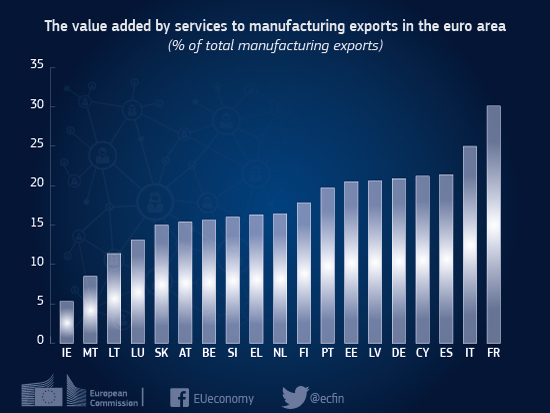

Accessibility tools
Service tools
Language
Navigation path
Market services, including wholesale and retail trade, financial services, transport and information technology, are the largest economic sector in the euro area, accounting for 51% of GDP. Their overall importance to the economy, however, is even greater, as services are also competitiveness-enhancing ‘inputs’ and facilitators of manufacturing exports.
The graph below shows the contribution of each country's own services to manufacturing exports.

The differences between the countries reflect to a large extent the differences in size. Larger countries’ manufacturing exports use a higher proportion of domestic services.
But size is not all: a large country able to source domestically most of the services needed may still have low-productivity, inefficient services.
Independent of size, countries whose manufacturing exports use a high proportion of domestic services could potentially boost their exports by addressing underperformance in their service sectors.
Improving competition in services would also be beneficial for the euro area as a whole, as it would strengthen its ability to adjust to economic shocks and will facilitate current account rebalancing.
Although reforms to improve the competitiveness and integration of service sectors have been high on the EU’s agenda for over two decades, progress has been disappointing in recent years.
A more integrated Single Market for goods and services is one of the European Commission’s priorities for 2015 and a new Internal Market Strategy will be presented by the end of the year.
Additional tools